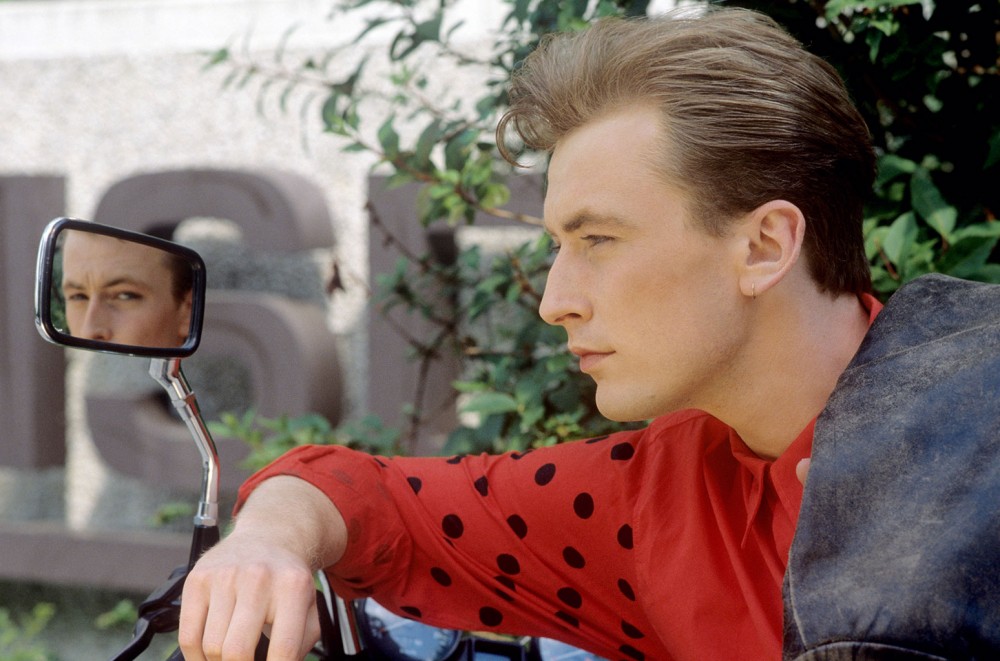
Andy Gill, who has died at age 64 of pneumonia, was the guitarist and co-founder of Gang of Four, among the greatest of British post-punk groups.
Named after the cabal who ruled China upon Mao’s death, Gang of Four were part of an unlikely fertile musical scene of the late ‘70s: Leeds University’s School of Fine Art. Gill and Gang of Four singer Jon King studied there, as did members of post-punk peers The Mekons and Delta 5. Raiding their art theory classes, Gang of Four sang about sex as commodity (“Damaged Goods”), home life as another form of work (“It’s Her Factory”), love as anthrax. They designed Situationist-inspired record sleeves (one example: a photo of a matador and bull in the ring, with proposed dialogue. Bullfighter: “You know, we’re both in the entertainment business.” Bull: “I think that at some point we need to take responsibility for our actions”).
Taking their theoretical ideas too seriously was a snare for critics. As Gang of Four would admit, they were a fundamentally a dance band, owing as much to Motown as they did Marx. “The Gang of Four, with all their doubts about the ideological soundness of rock music, have chosen to stay firmly within it because they obviously love it,” Mary Harron wrote of them in Melody Maker in 1979. “This dilemma makes them both the most contradictory of all the new groups, and the most exciting.”
Gill’s guitar style was the type for which adjectives like “angular” were pressed into service to describe. He’d say he was exploiting the physicality of his instrument. “The sound of the pick against the string. All those scrapes and zips, all those things mixed in with a little bit of a tune made something quite magical,” he told Premier Guitar last year. “You could play a single note and make a kind of Morse code out of it in a very simple way. When I’m coming up with an idea for a song, say, my starting point is often a drum idea.”
He considered himself an anti-lead guitarist, reacting to everything he hated about ‘70s rock. Inspired by the trebly, insistent rhythm guitar of Wilko Johnson in the pub-rock band Doctor Feelgood, Gill went further along that line. He scorned using distortion pedals and his “lead” interjections were shrieking chords or runs of aggravation along his high strings, all outbursts kept as brief as possible. “Once the sound has sort of made its point, it doesn’t necessarily need repeating.”
Gill even rejected valve amplifiers because their sound was too warm. “Gang of Four were against warmth,” he told Simon Reynolds in the latter’s Rip It Up and Start Again. “I had transistorized amps — a more brittle, cleaner sound, and colder.” Disliking “guitar hierarchy,” he wanted to be equalized with other parts of his quartet. In Gang of Four, “the vocals work around the guitar, the guitar works around the bass and drums…a horizontal line where everything relates to everything else,” Gill told Vintage Guitar. “The guitar isn’t the instrument; the band is the instrument being played. Many of the guitar parts in [our] songs, if you try and play it on its own, for the most part it doesn’t make a whole heap of sense.”
Pulling this off meant brutal rehearsals and enforced minimalism (bassist Dave Allen was told to stop playing so many notes, drummer Hugo Burnham would throw his sticks at Gill in frustration). The result was a band wired to respond to each other’s slightest movements. Bass or guitar would drop out for a few bars, leaving a hole in the song, an “anti-solo.” Or, as on one of Gang of Four’s masterpieces, “At Home He’s a Tourist,” Gill was the abrasive element, sandpapering against the bass/drumline.
Though having minor chart success, Gang of Four’s early 1980s U.S. tours left converts in their wake, including much of the ‘80s indie rock scene. Fans included R.E.M., Pylon, Kurt Cobain, and the Red Hot Chili Peppers, whose 1984 debut album Gill produced while at war with the band (Flea defecated in a pizza box and gave it to Gill, who rolled his eyes at how obvious an insult it was).
Dedicated modernists, Gang of Four radically altered their sound by the year, soon retiring the Marxist disco of Entertainment! (1979). Songs of the Free (1982) had muted guitar and backing singers (“I Love a Man in Uniform”). By 1983, with only Gill and King left of the original quartet, they made an alienated synth-pop album, Hard (“Is It Love?” was their chart peak, a No. 8 on Billboard’s Dance Club Songs chart). Gill would be the only constant of Gang of Four’s subsequent revisions: the band broke up after Hard, reformed in 1987, broke up again a decade later, then reformed in 2004, with Gill working until his death.
Among the greatest tributes paid to Gill is that so many younger guitarists tried to imitate his style and none succeeded (Franz Ferdinand gave it a good shot in the ‘00s). He was unique in part because he was a superb listener, picking up on what everyone was playing around him and determining exactly where he needed to be in a song.
And he was precisely ferocious. In a performance of “What We All Want,” recorded at the Hammersmith Palais in March 1981 (it appeared on a 1982 American EP, Another Day/Another Dollar), Gill starts by sounding as if he’s hacking his way through sheets of metal. But he’s never indulgent—he’s always staying within the service of a massive groove. When King comes in to sing, he’s like a man who’s leapt onto a speeding locomotive. Gill was its engineer.


 75
75